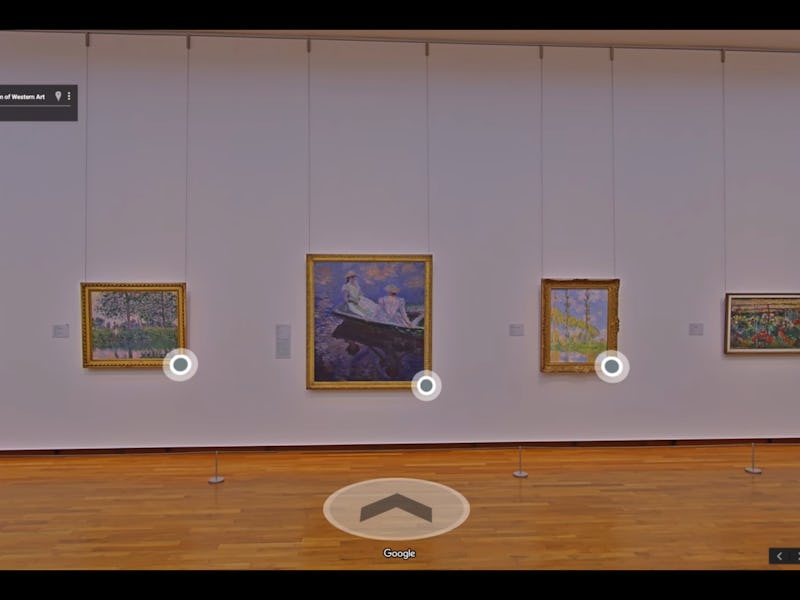Google Street View Adds Museum Tours
Google has now added virtual museum tours, and it's not done yet.

Google celebrated the 10th anniversary of Street View this week, its incredibly ambitious (and shockingly successful) plan to create a 3D photographic map of the world. Most companies would rest on their laurels after that sort of investment, but not Google. On Wednesday, Google announced the latest addition to the Street View platform: viewable art galleries and museums.
It’s just another piece of evidence that Google became the most valuable company in the world by refusing to become complacent in its dominance.
Ten years ago, the idea behind Street View seemed impossible: send an army of vans equipped with sophisticated 360 cameras down every street in America, and eventually every street in the world. These recognizable vans became a part of the culture, and a symbol of Google’s moonshot nature. It helped establish Google as a company that could do the impossible, and the ubiquitous van-sightings helped it seem like a more physical company than any other digital competitor.
When was the last time you waved at a Facebook van? To make the true disparity in corporate ambition clear, consider this follow-up question: When was the last time you saw a Facebook goat?
Google's photo-capturing embraced the off-road mentality whenever necessary.
Over the years, Google has added to the service significantly. Not only has it added remote areas from the highest mountaintops to the Amazon rain-forest, but Street View has taken people into the urban warrens like Japanese ramen-alleys. Google has even added the option to tour certain underwater reefs!
And not only have Google’s vans traveled an incredible proportion of the inhabited world, they’ve done so many times. This has let Google add a “time machine” option to Street View, so users can watch the evolution of neighborhoods over years. It’s clear that Google doesn’t plan on stopping its dedication to Street View. So, in ten years’ time, that time machine option could just be the best available trip down memory lane.
One of the most intriguing additions, and the furthest outside its original vision, were interiors, and in particular the interiors of tourist attractions. Google added the ability to tour Iraq’s National Museum in 2011 — and now, more than five years later, it’s sticking with the idea and taking it a big step further.
Google has used the same machine learning algorithms that power searches in Google Photos to identifying over 15,000 pieces of artwork at hundreds are participating museums and art galleries. On desktop browsers and the Chrome mobile browser, this 3D tour will be enhanced with helpful data about each piece of art, like a virtual version of the placard from the museum itself. Users will be able to zoom in to view each painting in super high-def, and of course figure out exactly how to find the appropriate gallery in the real world.
The feature is beyond cool on its own, but taken as just another point along a never-ending process of Maps-advancement, it’s an exciting glimpse of where Google wants the service to go. Maps is essentially just Google’s web-crawling obsession with indexing everything given physical form — and just as indexing the opened up the internet in ways nobody could have imagined, Maps is having much the same effect in the real world.
See also: Google Lens Gives Your Phone’s Camera a Brain
In young people who have come to take its existence for granted, Maps has created an unconscious, swaggering confidence about being able to head out into parts unknown, both domestically and around the world.
Yet just as Maps made it easier than ever to explore the world, Street View tours could make it easier to avoid. Maps shows people where to go, but Street View shows them what it’s like to go there; as Google continues to incorporate a wider variety of attractions, and particularly as it adds more robust support for virtual reality, its now decade-long quest to index the world could end up being so successful that it convinces some that they can do just as well by staying at home.